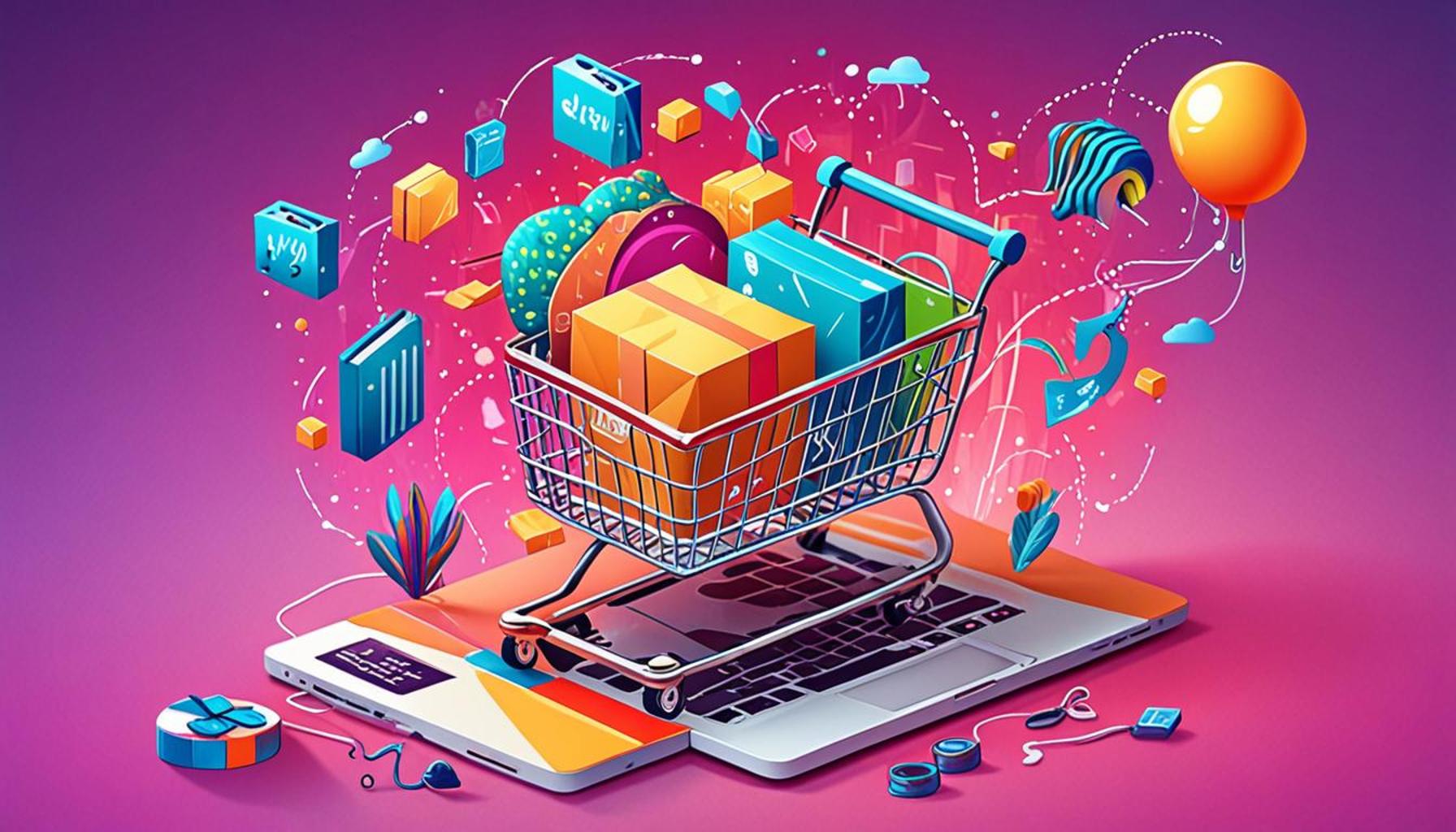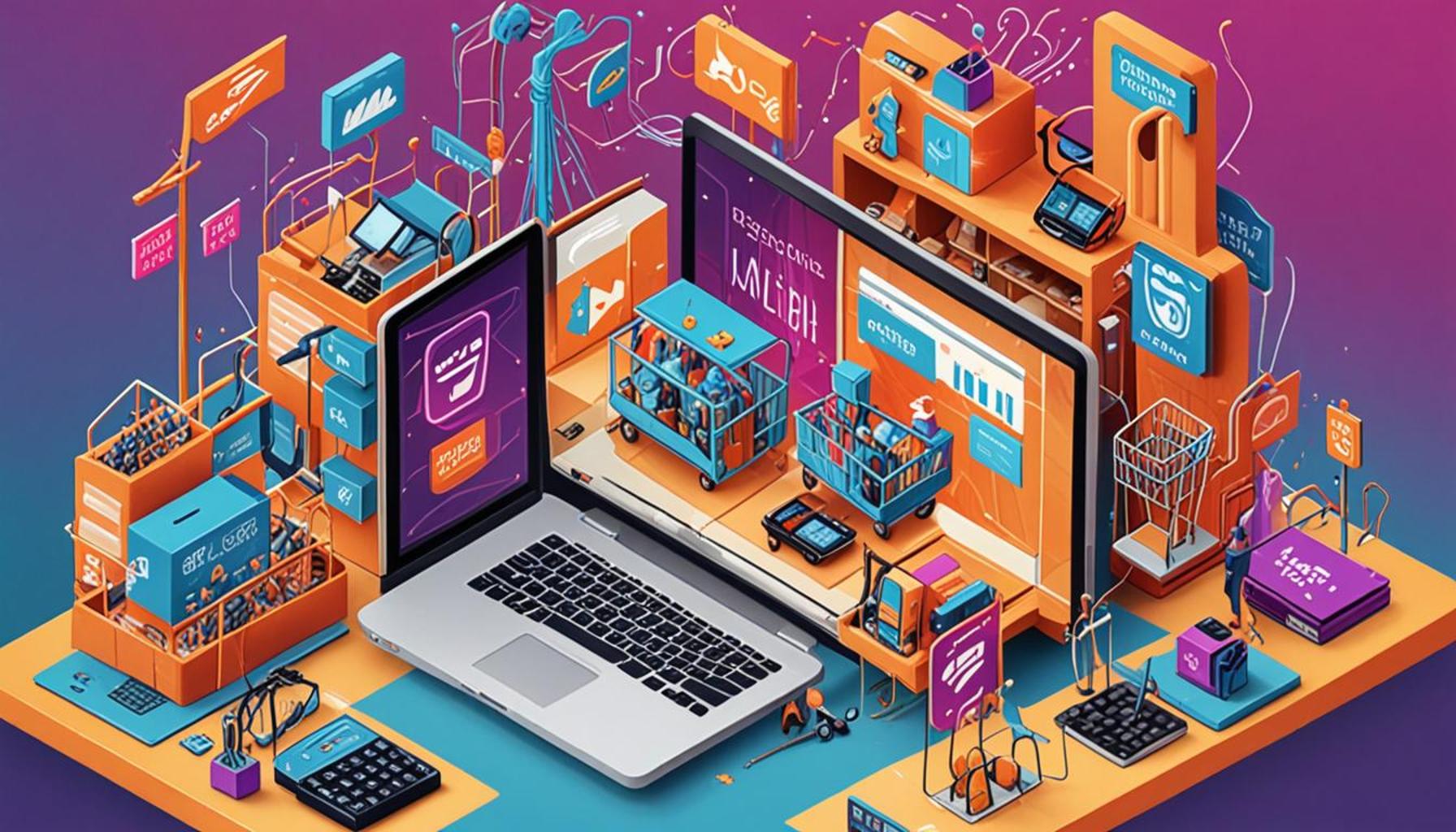Emerging E-commerce Trends That Can Drive Online Growth

Transformative Trends Reshaping E-Commerce
The landscape of online shopping is undergoing a dynamic revolution, providing an array of opportunities for businesses willing to embrace change. As of 2023, the surge in e-commerce growth is evident, fueled by significant trends that are redefining consumer behavior and interaction with brands. Understanding these shifts is crucial for any business aiming to thrive in this competitive environment.
- Personalization: In the era of digital shopping, consumers no longer settle for generic experiences. Brands leveraging data analytics to craft tailored shopping experiences significantly enhance customer satisfaction. For example, companies like Amazon and Netflix utilize sophisticated algorithms that analyze past purchases or viewing habits to suggest products that align with individual preferences. This approach not only boosts sales but also fosters customer loyalty, as shoppers feel understood and valued.
- Mobile Commerce: With more than 50% of online sales attributed to mobile devices, optimizing e-commerce platforms for mobile usage is no longer optional but essential. Consumers now expect a seamless shopping experience across devices. This trend underlines the importance of mobile-friendly websites and apps, as well as payment solutions like Apple Pay and Google Wallet, which facilitate quick and easy transactions, thus catering to the on-the-go lifestyle of today’s consumers.
- Social Commerce: Social media platforms have evolved into vibrant marketplaces, seamlessly integrating content and commerce. Retailers can now leverage platforms like Instagram and TikTok to showcase products through engaging posts or stories, allowing for direct purchases without leaving the app. For instance, brands can use shoppable posts to turn casual browsing into immediate buying, significantly enhancing conversion rates and brand visibility.
- Subscription Services: The rise of subscription models has revolutionized consumer expectations. Whether it’s streaming services like Hulu, subscription boxes like Birchbox, or food delivery services such as Blue Apron, businesses offering recurring deliveries are meeting the demand for convenience and affordability. This model not only ensures a steady revenue stream but also strengthens customer retention, as subscribers often develop loyalty to brands that meet their needs consistently.
As we examine these trends, it is crucial to understand their deep-rooted implications for the future of retail. Consumer behavior affects how businesses can effectively leverage these innovations to ensure sustainable growth. By embracing these transformative trends, from personalized experiences to mobile optimization and social commerce, both budding entrepreneurs and established brands can position themselves for success.
In this fast-changing digital marketplace, staying informed and agile is key. Embracing these emerging e-commerce trends is not merely about keeping pace but about anticipating change and innovating in ways that enhance the customer journey. Those who can adapt and evolve will undoubtedly unlock new avenues for success in the ever-expanding world of e-commerce.
CHECK OUT: Click here to explore more
Innovative Strategies Shaping the Future of Online Commerce
As the digital marketplace continues to evolve, businesses are facing a plethora of new opportunities driven by emerging e-commerce trends. These trends not only offer innovative pathways for growth but also redefine how consumers interact with brands and make purchasing decisions. In an increasingly competitive landscape, companies that can adapt to these changes are poised to succeed.
One significant trend gaining traction is artificial intelligence (AI). AI technologies are revolutionizing e-commerce by enabling businesses to automate processes, improve customer service, and optimize supply chains. For instance, chatbots powered by AI can provide instant customer support, answering queries and guiding users through their shopping experiences 24/7. A recent study revealed that companies utilizing AI-driven customer service solutions see a 30% increase in conversion rates. This highlights the potential of AI not just as a cost-saving tool, but as a vital component in enhancing customer engagement.
- Sustainability: As consumers become more environmentally conscious, brands are increasingly focusing on sustainable practices. This includes utilizing eco-friendly materials, reducing waste, and transparent supply chain practices. According to a report from Nielsen, 66% of global consumers are willing to pay more for sustainable brands. Therefore, businesses that align with eco-friendly values can capture a growing segment of conscientious consumers.
- Virtual and Augmented Reality (VR/AR): The use of VR and AR technologies in e-commerce is transforming the shopping experience. Brands such as IKEA use AR apps that allow consumers to visualize furniture in their homes, providing a more interactive and engaging experience. This trend not only enhances the shopping journey but also reduces returns, as customers have a clearer understanding of their purchases.
- Influencer Marketing: The power of social media influencers continues to reshape how brands market their products. Collaborating with influencers allows businesses to reach targeted audiences more effectively. According to a study by Influencer Marketing Hub, companies earn an average of $5.78 for every dollar spent on influencer marketing. This demonstrates that leveraging authentic voices can drive significant returns on investment.
- Seamless Omnichannel Experiences: Today’s consumers expect a seamless journey across different channels—online platforms, physical stores, and social media. Brands that adopt an omnichannel approach, ensuring consistent messaging and availability across all touchpoints, will see improved customer satisfaction and loyalty. Research indicates that omnichannel shoppers spend 10% more in-store than single-channel shoppers, highlighting the importance of integrating all customer interactions.
By recognizing and investing in these emerging trends, businesses can better prepare themselves for a successful future in e-commerce. The quest for innovation is not merely about adopting the latest technology; it’s about understanding the evolving preferences of consumers and positioning brands to meet those demands effectively.
As we delve deeper into these trends, it becomes evident that those who remain agile and responsive to these shifts will continue to unlock new growth potential in the vast world of online commerce.
| Trend Category | Description |
|---|---|
| Personalization | Creating tailored shopping experiences through user data. |
| Mobile Commerce | Optimizing e-commerce platforms for mobile devices, enhancing customer engagement. |
| Social Commerce | Utilizing social media platforms as direct sales channels, boosting visibility and sales. |
| Subscription Models | Encouraging repeat purchases through curated subscription services, increasing customer loyalty. |
Emerging trends in e-commerce are not just reshaping how businesses operate; they are also forging new pathways for consumer engagement. For instance, personalization leverages advanced analytics to create tailored experiences that resonate with customers, ultimately increasing conversion rates. Meanwhile, the growth of mobile commerce emphasizes the necessity for businesses to prioritize mobile optimization, as more consumers are utilizing their smartphones for shopping. The rise of social commerce indicates a shift toward integrating shopping experiences directly into social media platforms, allowing brands to connect with their audience on a personal level while facilitating an easier purchasing process. Lastly, adopting subscription models can cultivate customer loyalty; consumers are drawn to convenience and curated experiences that encourage sustained engagement with brands. By staying aware of these emerging trends, businesses can better position themselves to leverage opportunities for growth in the competitive e-commerce landscape.
SEE ALSO: Click here to read another article
Personalization: The Key to Driving Engagement
In the competitive world of e-commerce, personalization has emerged as a crucial driver of consumer engagement and loyalty. As customers increasingly demand tailored shopping experiences, brands are leveraging data analytics and machine learning to deliver customized product recommendations, targeted marketing campaigns, and personalized content. According to a segment by McKinsey, companies that excel at personalization can achieve five to eight times the ROI on their marketing spend. This shocking statistic showcases the financial benefits of investing in personalized strategies within the e-commerce framework.
From personalized emails to targeted advertisements based on browsing behavior, companies are utilizing comprehensive data insights to refine their marketing approaches. For example, platforms like Amazon utilize algorithms that analyze previous purchases and browsing habits to recommend products tailored to individual preferences. As a result, customers enjoy a more relevant shopping experience, leading to increased conversion rates.
- Subscription Services: Another trend gaining momentum in e-commerce is the rise of subscription-based services. Brands such as Dollar Shave Club and Stitch Fix have successfully harnessed this model, offering consumers curated experiences and convenience. Subscription services create a reliable recurring revenue stream for businesses while fostering deeper relationships with customers, who appreciate the ease of ongoing deliveries and personalized selections.
- Mobile Commerce: As mobile devices continue to dominate internet traffic, optimizing for mobile commerce (m-commerce) is no longer an option but a necessity. Statista reports that mobile e-commerce sales are projected to account for over 72.9% of total e-commerce sales by 2021. Consumers prefer the convenience of shopping on-the-go, making it vital for businesses to ensure their websites and online shops are mobile-friendly. Improving site speed and refining user experience for mobile interfaces can significantly enhance conversion rates and customer satisfaction.
- Social Commerce: Integrating e-commerce with social media platforms has become an effective way to tap into younger demographics. Platforms like Instagram and Facebook are allowing brands to sell directly through ads and shoppable posts. The Social Media Examiner reports that 54% of social media users browse for products on social platforms prior to making a purchase, demonstrating that social commerce can be a powerful avenue for reaching potential buyers.
- Blockchain Technology: Transparency and security are paramount in today’s e-commerce landscape, and blockchain technology offers promising solutions. With its potential to provide secure payment methods, track the authenticity of products, and enhance supply chain transparency, blockchain can be a game-changer for brands dealing with counterfeit goods and consumer mistrust. Companies like VeChain are already employing blockchain to bolster customer confidence by enabling them to verify product origins.
These trends are not just fleeting fads; they reflect the natural evolution of consumer expectations in the digital age. Companies that actively engage with these emerging strategies will not only stay relevant but also gain a competitive edge in the ever-expanding online marketplace. The integration of these innovative approaches enables brands to cultivate a deeper connection with their audience, ensuring that they remain top-of-mind when shopping decisions arise.
ADDITIONAL INSIGHTS: Expand your understanding here
Conclusion: Embracing the Future of E-commerce
The e-commerce landscape is rapidly evolving, driven by innovative trends that offer brands unprecedented opportunities for growth and engagement. As we’ve explored, personalization has become a pivotal element that not only enhances customer experiences but also significantly boosts marketing ROI. Companies leveraging data analytics are better positioned to meet individual customer needs, creating a customized shopping journey that fosters loyalty.
Additionally, the rise of subscription services illustrates a shift towards convenience, allowing businesses to establish ongoing relationships with consumers while generating predictable revenue streams. With nearly 73% of e-commerce sales now occurring on mobile devices, prioritizing mobile commerce is paramount in capturing the modern shopper’s attention. Brands must ensure their interfaces are optimized to provide a seamless experience that caters to on-the-go consumers.
As social media continues to play a pivotal role in purchasing decisions, social commerce is shaping the way brands interact with younger demographics. The ability to sell directly through platforms like Instagram and Facebook makes it essential for companies to integrate their e-commerce strategies with social media outreach. Furthermore, the implementation of blockchain technology serves to enhance transparency and security, addressing consumer concerns about authenticity and trust in the digital market.
In summary, the e-commerce arena is brimming with potential for those who are willing to adapt to these emerging trends. Brands that invest in personalization, mobile optimization, subscription models, social strategies, and blockchain solutions will not only meet but exceed growing consumer expectations. As the industry continues to transform, those who embrace these changes are positioned to thrive in the competitive online marketplace. To remain relevant and profitable, ongoing exploration and innovation will be key, inviting businesses to stay informed and agile as they navigate the future of e-commerce.



